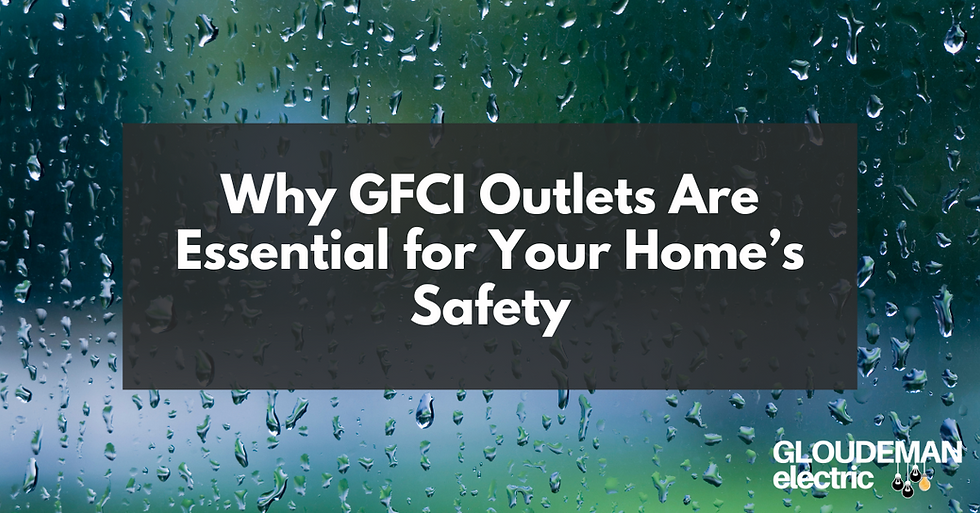Electrical Connection Points: Protect Your Home
- Gloudeman Electric

- Feb 12, 2023
- 3 min read
What are connection points and why should you care?
Using our appliances, lights, and electric cars is everyday minutiae to us. Most of this stuff comes robotically without more than a glancing thought. But what exactly happens when the connections within these electrical items aren’t tightened as they should be? Let’s get into it!
The heart of your home’s electrical system is the electrical meter. The meter is fed from the utility (what the city owns) to the breaker box inside or outside the house (depending on where you live, some breaker panels are inside or outside homes). Power then flows through a variety of circuit breakers to supply the load demanded by the circuits inside a home. These breakers go to HVAC circuits, outlets, lighting, etc.: Anything in your house that demands electricity.
When things go south:
Sometimes an electrical installation can become seriously damaged when a connection is not tight. Nearly every single electrical device, panel, or appliance has a manufacturer specification for tightening and installation printed on it. If these specifications are not followed, a bad connection can occur.
There are many issues a bad connection can cause. To name a few:
- Melting of devices
- Damage to electrical boxes
- Damage to appliances
- House fires
We know that the last one sounds the scariest, but it is preventable. We’ll get into that a little later…
The above issues can happen within your house when you have interior bad connections, but there are also potential hazards that can occur outside the structure. If a bad connection is present where the utility brings power in, you could “lose a neutral” to your system. The neutral wire in your electrical system is your “return path to ground”. It’s a very important wire (we won’t get into too much of the specifics), even though typically all people think about when they consider wires in their homes are the hot and the ground wires. If you lose a neutral wire, all of your household standard 120-volt receptacles, lights, and everything plugged into an outlet will receive 240 volts of electricity. This will cook all of the aforementioned things, and undeniably result in very expensive replacements and repairs.
When should you be concerned about loose connections at the utility? If all of the lights in your home are flickering, or you are noticing broad power issues (not isolated to a singular room), then it's time to call the power company to take a look at the utility to see if there are loose connections on their end.
See below for a video that shows you a real live action view of how loose wires can cause fires.
So, what should you do?
As a homeowner there are some preventative steps you can take to avoid loose connections. To start, and something you can do yourself, is to make sure all of your bulbs are nice and snug inside their sockets (they’re a connection point, too!). Make sure all of your receptacles hold whatever you plug into them tightly. If you notice your plugs are wiggly and not holding the male outlet end securely, they should be replaced (we can do that).
If you see that your breaker panel appears aged (rusted) or notice a burning smell—or perhaps you just want the peace of mind that your house has a nice solid connection—we offer panel tune ups (where we tighten connections inside your electrical panel) and evaluations. We also offer visual inspection of your home and can ensure that your receptacles handle a load correctly by using a special testing device to test every outlet.
There are roughly 51,000 house fires each year caused by electrical issues and failures, and it is my personal goal to ensure that every electrical item that I touch has a solid connection and is done up to the manufacturer’s specifications. I want everyone to be enlightened and educated on the dangers of loose connections and hope you feel more so after this article.
Andrew Gloudeman Lead Electrician Gloudeman Electric, LLC








Comments